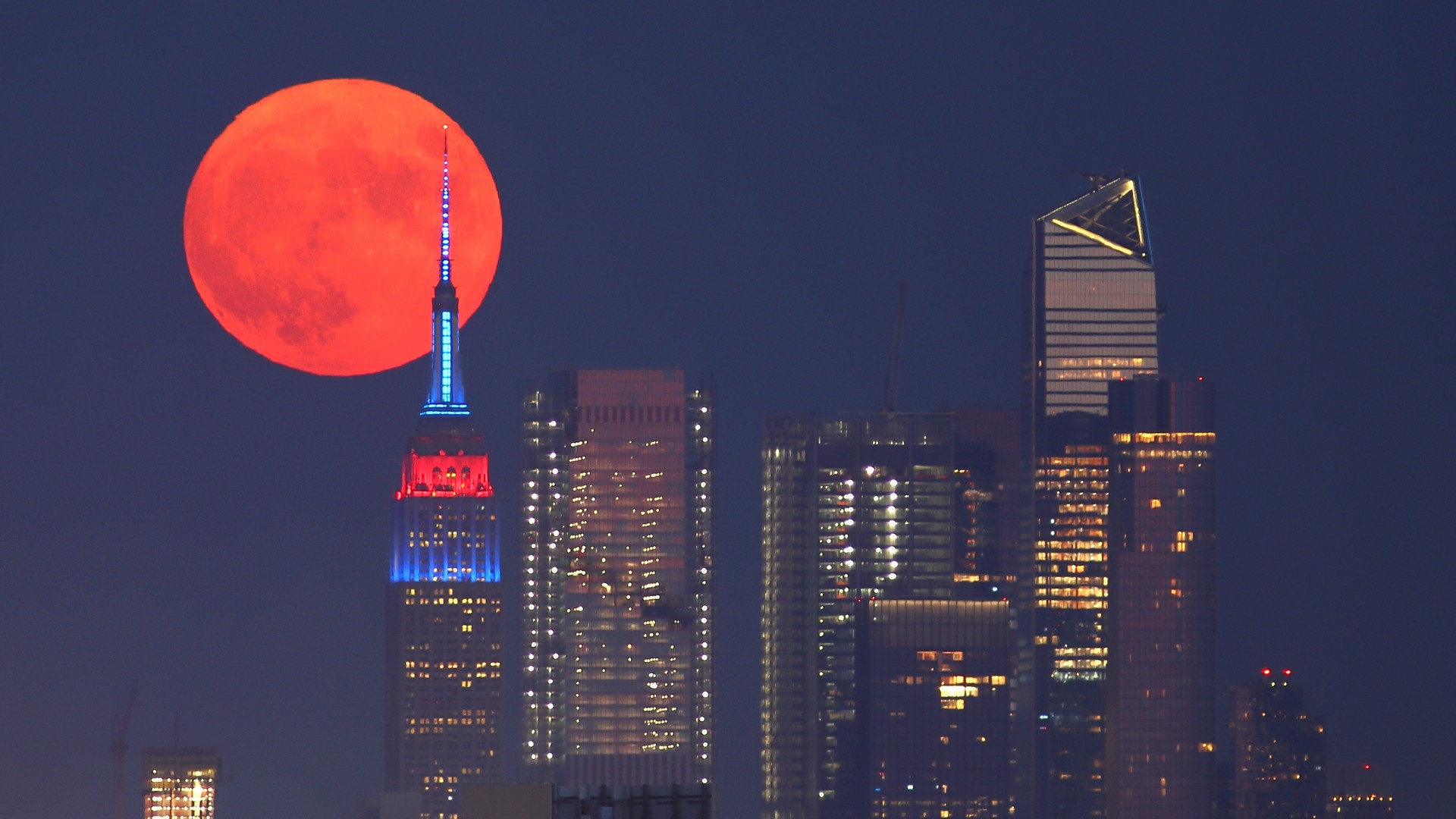
July's full Buck Moon will rise later this week, becoming the first supermoon of the year. Not only will the moon be closer to Earth than it typically is, but for most observers, the moon will also remain lower in the sky than at any other time this year.
The Earth-facing side of the moon will be fully lit by the sun at 6:40 a.m. EDT on Monday, July 3, but it will be best viewed at moonrise the previous evening as it appears in the southeastern sky. It will be in the constellation Sagittarius, and will appear bright and full on the nights of July 2 and 4 as well.
The most popular name for July's full moon is the Buck Moon, because the antlers of male deer (bucks) are growing at this time, according to Almanac. However, other names include the Thunder Moon, Hay Moon, Salmon Moon and Raspberry Moon.
The Buck Moon is described as a supermoon because it will be a little closer to Earth than average, so it will appear slightly bigger and brighter. The moon has an elliptical orbit of Earth, so every month has a point of perigee (closest distance) and apogee (farthest distance). The mean distance of perigee and apogee can range from 225,800 to 251,800 miles (363,400 to 405,500 kilometers), respectively. Moons that come within 90% of perigee on a given month qualify as supermoons, according to Fred Espenak, an astronomer and former eclipse calculator for NASA.
July's full moon is the first and smallest of four supermoons in 2023, with the following full moons on Aug. 1, Aug. 30 and Sept. 29 destined to be slightly larger and brighter. For example, the Buck Moon will turn full while 224,895 miles (361,934 km) from Earth, but the biggest and brightest supermoon of 2023 will be the Blue Moon on Aug. 30, at 222,043 miles (357,344 km) from Earth. (That Blue Moon gets its name because it will be the second full moon in the same calendar month.)
Besides being closer to Earth than average, the Buck Moon is also one of the lowest-hanging full moons of the year, as seen from the Northern Hemisphere.
That's because a full moon at night mirrors the sun's position during the day. When the sun is highest in the sky during the day, as it is near the summer solstice in the Northern Hemisphere, a full moon will be at its lowest. The opposite is the case in December, when the moon rises very high at night as viewed from above the equator.
The next full moon after the Buck Moon will be the Sturgeon Moon on Aug. 1, which, at 222,159 miles (357,530 km) from Earth, will be the second-largest supermoon of the year.







